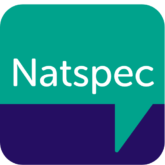Fil McIntyre, TechAbility Manager and Assistive Technology Lead, writes about how colleges can serve learners with access needs using technology.
Recently while walking through London, I was taking part in a WhatsApp group chat about how AI chatbots could improve language output for electronic communication aid users. My destination was a forum discussing how to develop training in Assistive Technology for frontline care and education staff. The juxtaposition of these two conversations highlighted the current situation for assistive technology in education. On the one hand, we are wowed by progression and exciting new technologies which can provide options for learners. However, day-to-day experience shows that colleges aren’t even using the most basic accessibility features which could support their learners.
Likewise, in November over 150 people gathered at TechAbility22 to learn about Assistive Technology use and share experiences from their settings. Even in this ‘specialist’ environment, the contrast of cutting-edge technologies and basic usage was apparent. Sessions about Virtual Reality and Smarthome solutions were as equally well attended as those on mobile phone access and improving basic practice.
So how do we get the balance right to ensure that learners are not missing out on opportunities at both of these levels? Often the answer in situations like this is to get the basics right before you start developing in more complex areas. However, when it comes to Assistive Technology we will be doing learners with complex access requirements a disservice if we don’t provide opportunities to have technology open doors for them – figuratively and literally.

The pyramid above shows that the access needs of large numbers of learners can be met with the settings already built-in to computers, tablets and phones. To deliver this, staff need to have a general awareness of accessibility and that adaptations can be made, and then develop knowledge of how implement them. Even the absolute minimum such as learners having text read out to them, and dictating into a document can be transformative.
Time at college is short, so the two levels above this need to be implemented in parallel with general awareness and training or learners will miss out. These levels are smaller in the diagram as a lower proportion of learners will require this input, but the input will require more time, knowledge and ongoing support. Ideally some specialist assessment and support will be delivered from within the college – by an Assistive Technologist, Allied Health Professional or TechAbility Champion. There will always be situations where additional expertise is required and referrals to organisations outwith college need to be made.
Interventions at both of the specialist levels will result in practical requirements for staff, for example supporting with hardware setups, or the use of software tools. This brings us back to the pyramid: implementation of the top two levels will be more impactful if staff have had their confidence increased by knowledge and experience of general accessibility and built-in settings. Underlying all the elements is the need to increase basic digital skills for staff. This is a complex subject, too big for this post, but for some background on why it is so tricky read “Rethinking digital skills in the era of compulsory computing”.
To summarise: Time at college is short and a high proportion of learners in specialist colleges will benefit from changes to the settings on computers, tablets and phones. In parallel learners with more complex access needs require specialist Assistive Technology assessment and provision. If you deliver the generic without the specialist, or vice versa, many learners will lose out.


